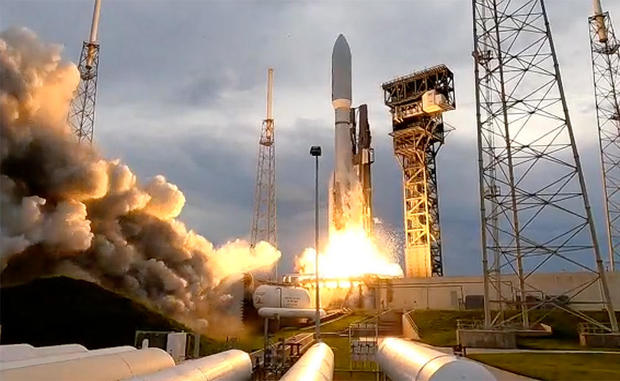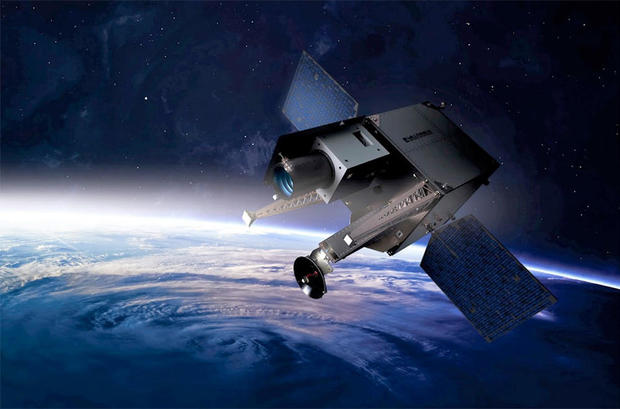[ad_1]
After waiting out cloudy weather conditions, the U.S. Space Power launched two satellites atop an Atlas 5 rocket Friday to check ballistic and hypersonic missile early warning and monitoring technological know-how and to deploy a maneuverable spacecraft carrying an mysterious range of classified payloads.
Currently working a day late mainly because of stormy climate, the $1.1 billion USSF-12 mission obtained off to a floor-shaking start out at 7:15 p.m. EDT when its United Launch Alliance rocket thundered to life with 2.3 million lbs . of thrust from its first stage engine and four strap-on boosters.
Trailing a spectacular jet of flaming exhaust, the 196-foot-tall rocket swiftly climbed from pad 41 at the Cape Canaveral House Power Station, knifing by means of minimal clouds and promptly disappearing from check out as it streaked absent to the east around the Atlantic Ocean.
United Start Alliance
Eleven minutes afterwards, the Aerojet Rocketdyne motor powering the rocket’s 2nd stage done the initial of a few prepared firings created to put the two satellites in a round orbit 22,300 miles over the equator. The vacation was expected to take about six hours, ending early Saturday with the satellites’ deployment from the Centaur next phase.
Satellites at these geosynchronous altitudes consider 24 hrs to full 1 orbit and so rotate in lockstep with Earth, allowing for steady hemispheric sights and enabling use of stationary ground antennas to relay knowledge and instructions.
The Wide Area of Look at Testbed satellite, or WFOV, attributes an infrared sensor designed by L3Harris that will be evaluated to establish its capability to both equally detect and track ballistic missiles and far more maneuverable hypersonic weapons.
The 2nd satellite, known as USSF-12 Ring, is a room truck of kinds, outfitted with six ports to accommodate instruments, sensors or little deployable satellites. What could possibly be aboard for the USSF-12 mission was not unveiled.
Millennium House Programs
As for the WFOV satellite, “Area Force’s variety one particular mission is the missile warning and missile monitoring mission,” stated Col. Brian Denaro of Area Systems Command. The USSF-12 mission “is an critical initial phase in that precedence mission space.”
The WFOV spacecraft is not intended to serve as an operational early warning satellite. As a substitute, it will take a look at the new sensor system and strategies for processing the large amounts of knowledge it will crank out to support “notify” designers of follow-on satellite techniques.
“The threat is surely evolving at an unprecedented quick tempo that we have not noticed before,” Denaro reported through a pre-start briefing. “We’re seeking at a assortment of targets and missiles in the hypersonic area that are far additional maneuverable, they are dimmer, they’re tougher to see.”
“And that is requiring a new technique to how we each detect and then monitor all these missiles throughout their flight,” Denaro included.
Area Drive is currently producing Next Technology Overhead Persistent Infrared — OPIR — satellites that at some point will exchange present Room-Based Infrared System, or SBIRS, early warning satellites.
Lockheed Martin retains a $4.9 billion agreement to establish 3 OPIR geosynchronous satellites though Northrop Grumman is furnishing two reduced-altitude polar satellites beneath a different $2.4 billion deal.
[ad_2]
Resource link


